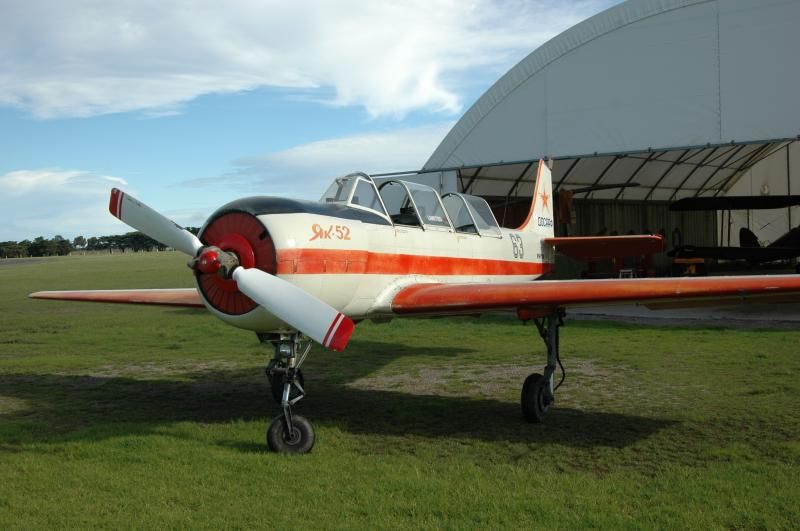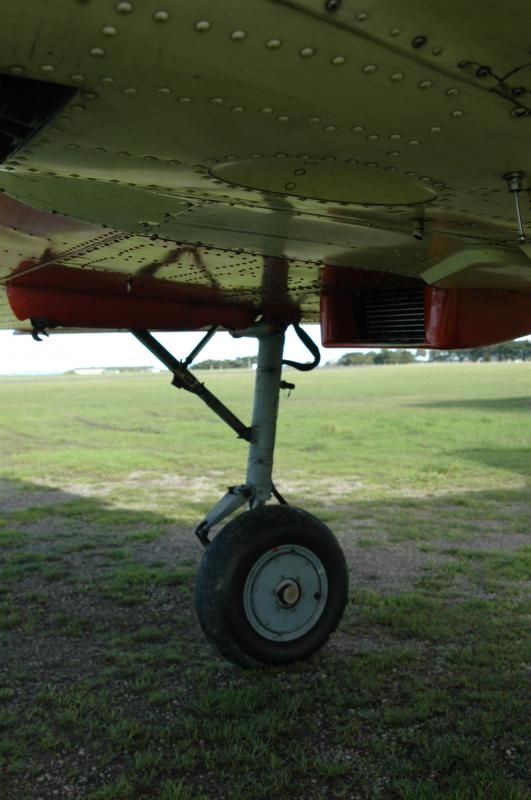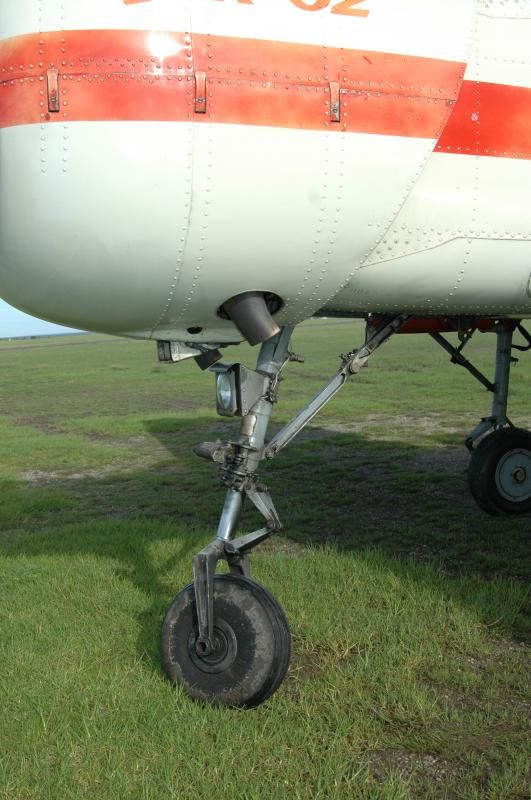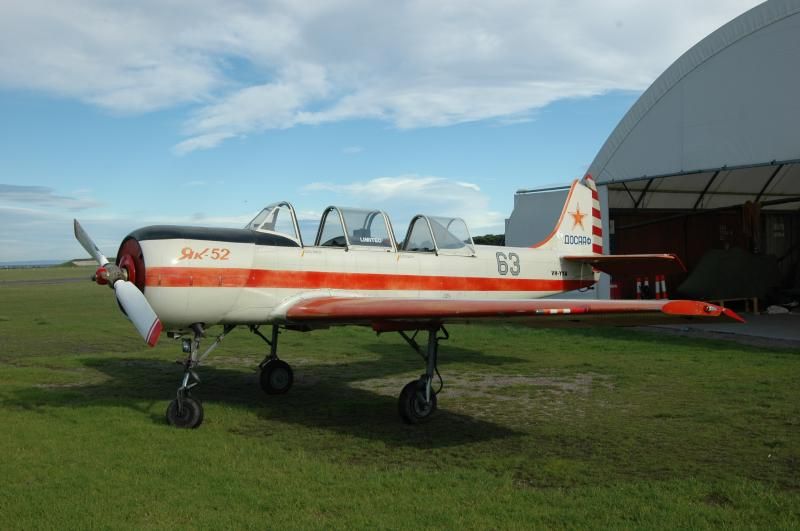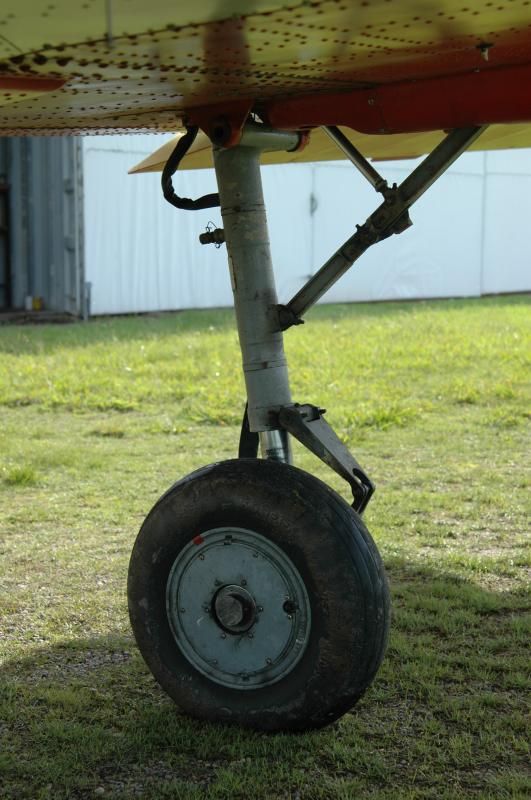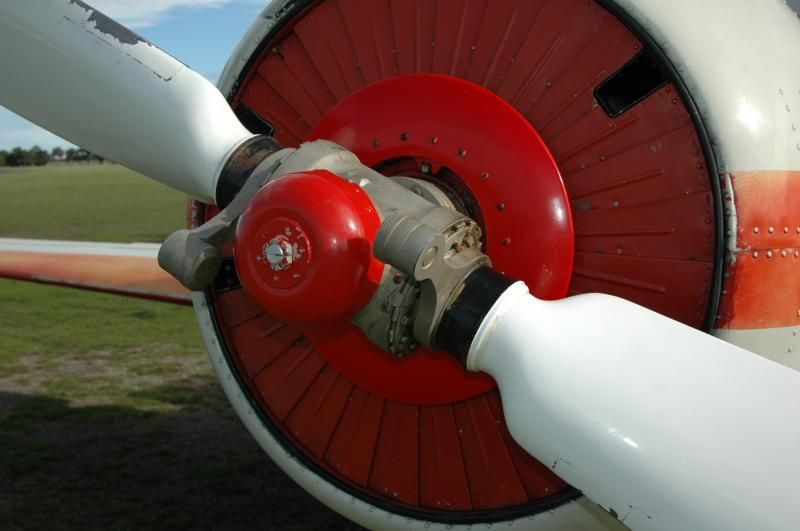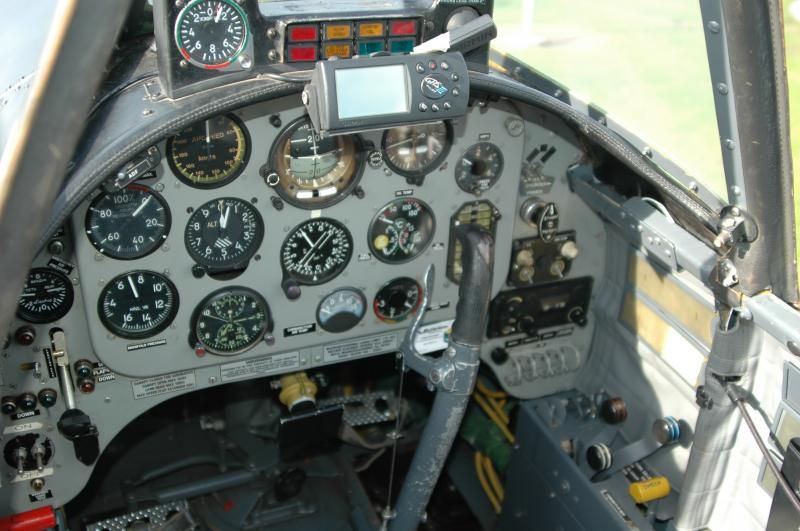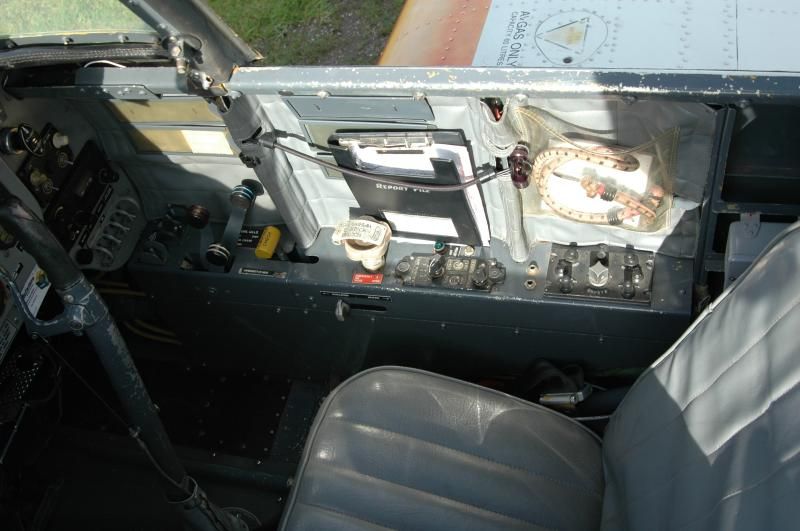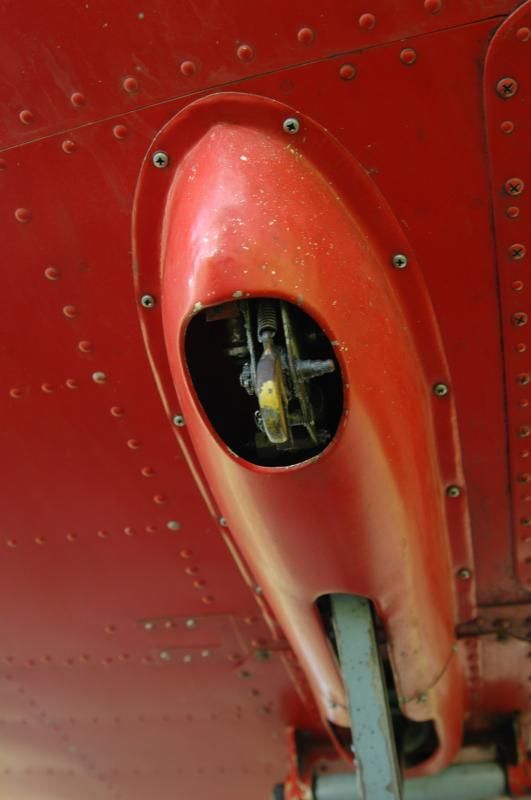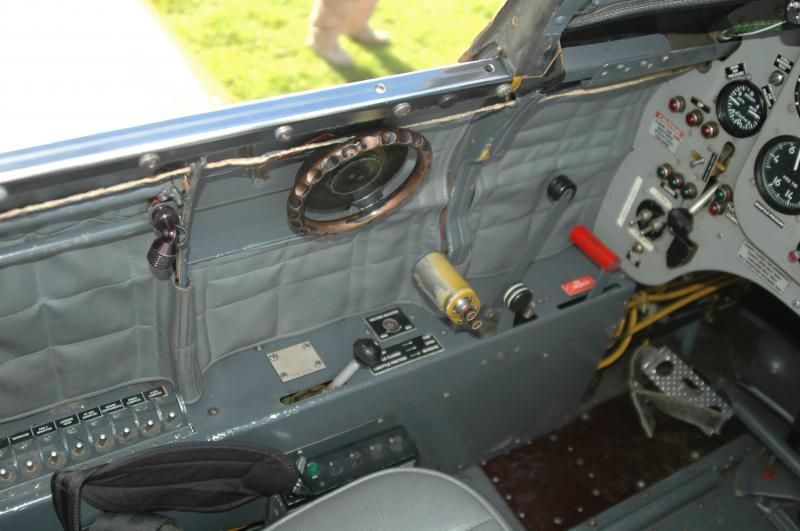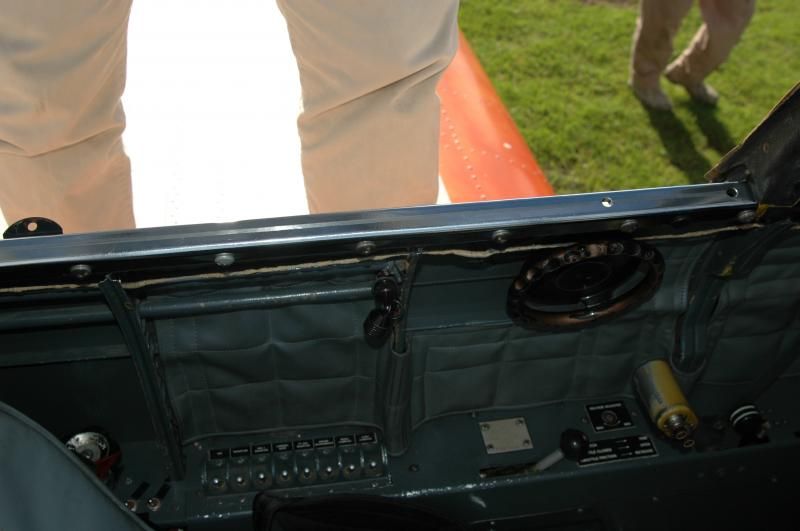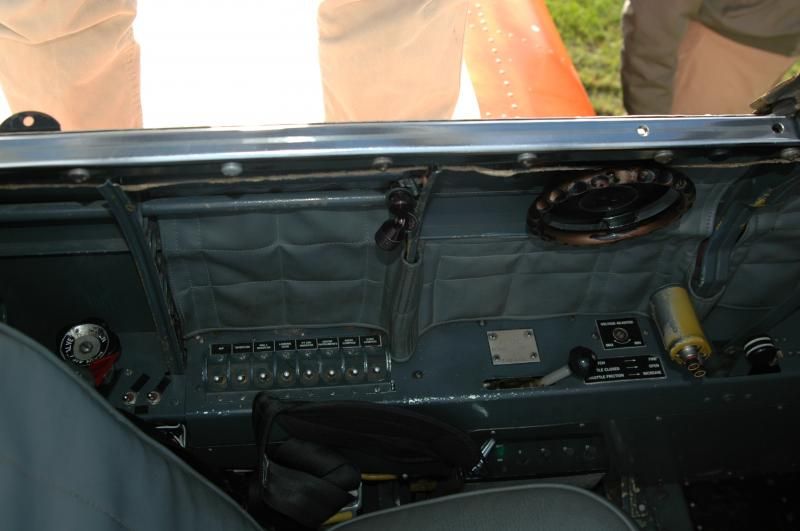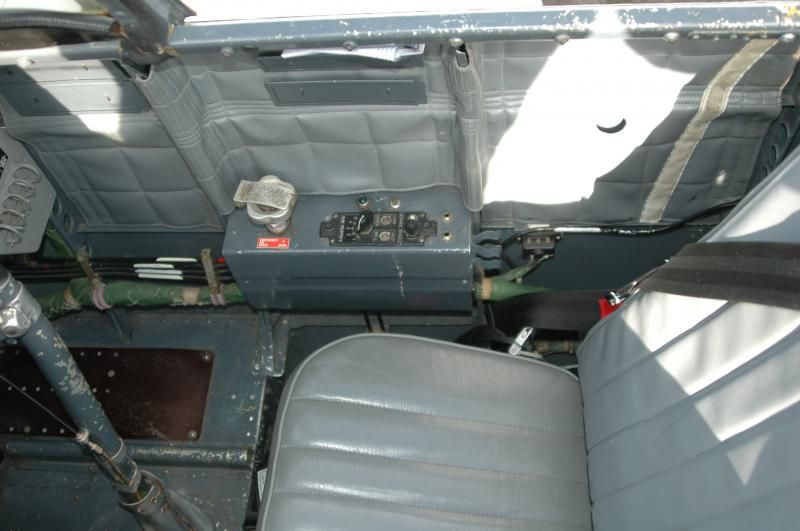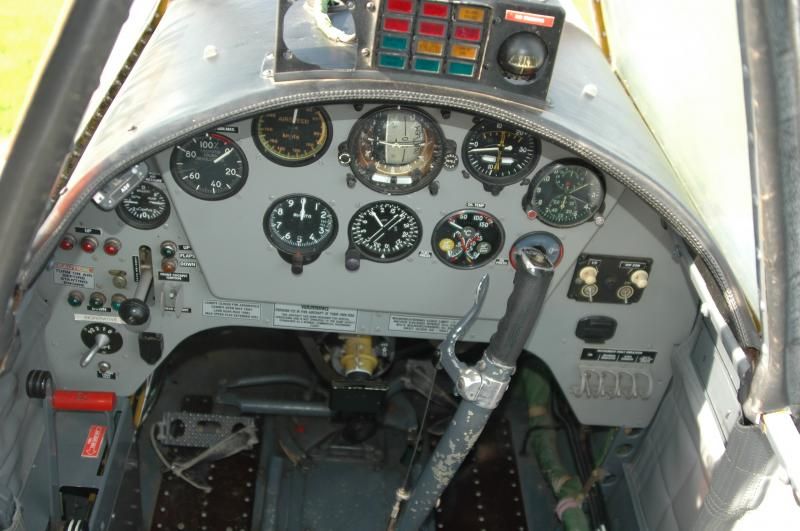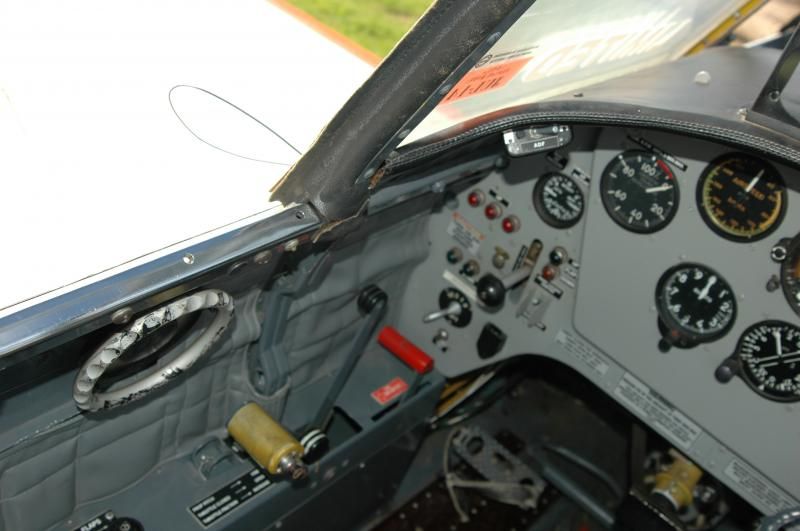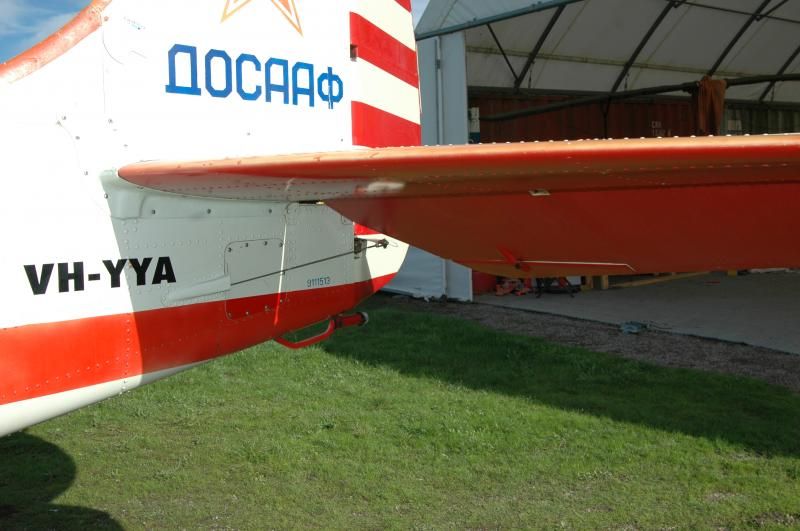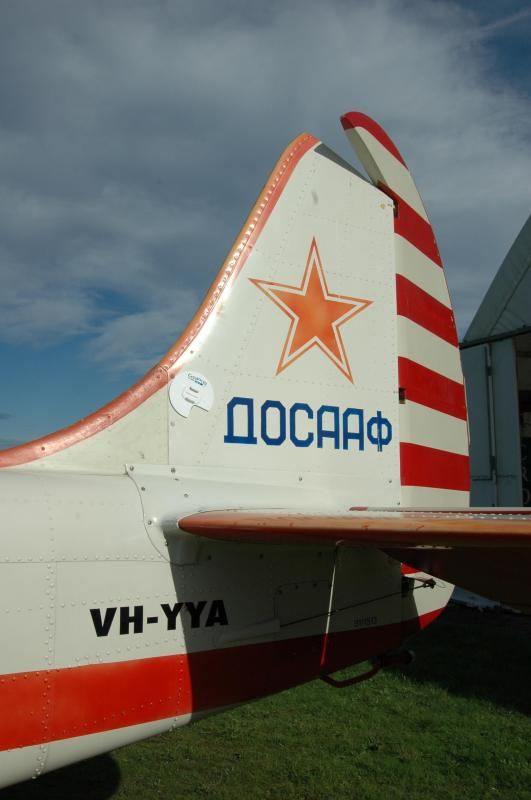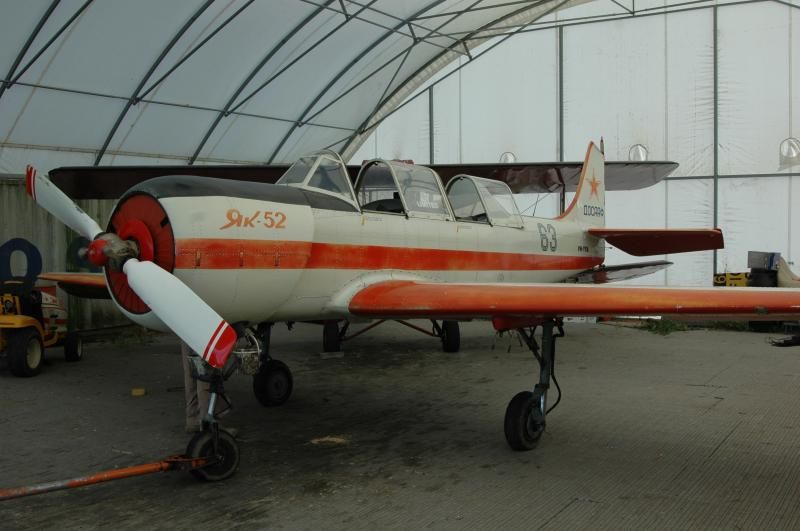In the vein of Salty's post below, I will attempt to describe my ride yesterday in a Yak-52. Much has been written about these Soviet era machines, of which I've done my fair share of reading. For years I have watched the Yak-50, 52 and 55 perform at both air shows and aerobatic comp's and sat in the odd one. I have an interest in Eastern Bloc/Russian aeroplanes, so have been looking forward for some time to "have a go" of one. This is the third Eastern Bloc aeroplane I've flown, others being a Sukhoi Su-29 and a Zlin-242. Years ago I had a ride in a big NA T-28D Trojan, so along with other aerobatic types flown (C-152 Aerobat, Decathalon, Z-242, Pitts S-2A, Laser, Alpha-160), I had some idea of what I was getting into at least.
The first impression is that these are fairly big and very solid machines, covered in dome rivets for extra strength. These aeroplanes are the proverbial Russian brick outhouse! One in fact needs a step ladder to climb up onto the wing to gain access to the cockpit, due to its long spindly leg u/c required to give its large paddle blade prop clearance with Mother Earth. The cockpit has a very military look about it – befitting of its role in training many thousands of Russkie air force, navy and Aeroflot drivers over the years. Everything comes easily to hand and eye. Only criticism is the throttle in the rear cockpit can hit and rub against one’s left thigh and can in fact have serious consequences. If the back seater’s left knee gets in the way of the throttle, it can mean that it can’t be fully retarded (a real bad situation in a spin if the pilot in fact thinks the throttle is fully retarded). This can accelerate the spin and make recovery a great deal harder and slower. This has happened to the owner on a previous occasion and now part of his safety brief. The stick is huge – looks like some 1½” pipe with a bicycle brake on the top. Rudder pedals can be adjusted to suit leg length and have nice straps (helpful when inverted).
Starting sounded something between a steam engine and a small explosion combined. There are all sorts of “PPTTSSSHHHHH” noises as the pneumatics comes alive, a few swings of those paddle blades then ignition as that mighty M-14P radial fires into life with a lot of sound, fury and vibration. A little time was then spent letting it warm up. Gary the owner/driver up the front then proceeded to taxi us, which in itself is an experience. Use of rudder with a blast of throttle gives some turning on the ground. Braking is that “ol fashioned” affair of pushing the rudder pedal required followed by pulling the “bicycle” brake grip on top of the stick (rudder neutral for straight ahead braking). This makes the big Yak lurch around into the desired direction. There is a little lag in this process both with the throttle use and brakes themselves and takes some getting used to, as I was to find out later much to my embarrassment!
Pre-takeoff checks and run ups completed by Gary, a final yank on the harness and closed the canopy, we then lined up and Gary pushed the big Russkie “go-lever” forward. The M-14P roared into life thundering us down the runway at PCK. Take off is fairly rapid thanks to the 360 horses up front and the thrust generated by those big paddles up front taking big bites of cold winter air and hurling them behind us. Climb rate is much like a Pitts Special S-2A at around 2000fpm.
Gary gave me the stick by giving it a waggle. Now the big Yak was mine! Control feel was very interesting – something like a cross between a T-28D and a Zlin-242. It has the solid feel of a military trainer, yet with a light elevator with a neutral feel to it. Role rate is supposed to be around 120 deg/sec, which is certainly fine for a trainer. The light elevator certainly must quickly sort out students with some talent and those better to serve the Motherland driving tractors or swinging 10kg sledgehammers building tanks. For my liking, the ailerons are a little heavy with the elevator very light and the rudder about perfect. One could certainly become very used to this and take great delight perfecting aerobatics in this machine. Both the Zlin-242 and Su-29 have very light elevators with that neutral feel to them. What I mean about this neutral feel is that regardless of airspeed, the elevator load feels much the same. I’m pretty sure this is to do with the elevator “horns” on the tip. These bite into the airflow taking the aerodynamic load of the elevator – a bit like power steering.
Gary then took back control and showed me some basic aero’s. His military training in the RAAF was evident with his smooth, professional and experienced touch on the controls (plus having a bunch of time in his Yak!). He smoothly flew the Yak through one manoeuvre to the next like it was on rails. It must be a military thing to do “ultra-slow” rolls. This is a great co-ordination manoeuvre involving use of all three control surfaces – whilst rolling, feeding in opposite “top rudder” at 1st knife edge, back to neutral rudder inverted but applying forward stick to keep the nose just above the horizon, then relaxing that and applying some bottom rudder and easing off the aileron at the ¾ point of the role. Competition rolls is doing the above but as rapidly as possible, so as to say in the “box” (and not give the judges too much ammo for scoring!).
Pulling into a loop cleanly took some getting used to with that neutral elevator with little feedback. It’s very easy to pull too hard and get into a little buffet (approaching a high speed stall) – it’s just getting used to finding that sweet spot for achieving the right pitch rate without getting into buffet. I’m probably more used to the older “US” control system of having a smaller stick with higher stick forces where you get that “feel” for the amount of G you are pulling from the stick load itself (Decathalon, Pitts, Laser). One could get to love this light stick load. I did enjoy flying the Zlin-242 with two fingers particularly. I have watched cockpit footage of Russians flying Yaks and Suks and they often fly with two hands on the stick. This would certainly help with roll at higher speeds and stick loads.
I then tried some ½ Cubans (1/2 a figure 8 on its side) and some stall turns. I had read some horror stories of how a simple stall turn can come unstuck big time in Yak. It’s not hard to stuff up a stall turn when kicking in rudder to transition from vertical nose up to vertical down and applying a little too much forward stick, which can flick it into an inverted flat spin. Once a spin flattens with full power on, it can take something like 4-5 turns to recover once the power is pulled off. If the spin winds up, you are thrown to the outside of the spin, handing in the straps and it can be an effort trying to reach over to close the throttle. So, being a little timid, I did kick in rudder too early prior to the aeroplane being almost stationary vertically nose up and “flew” over the top of my stall turns, rather than the nice pivot on a point as it should be.
Gary then showed me how the Yak spins (normal upright spin) and letting it wind up showing me how the inertia builds up that requiring what seemed like a turn or so to recover. It’s to do with those metal wings and long fuselage with a lot of weight behind the rear seat. This is no issue in competition, as comp spins are never more than 1 – 1½ turns, so the spin doesn’t get to wind up.
It’s been two years since I’ve had a decent aero’s session, I was now starting to feel a little queasy. Gary then suggested that we do some low level around the Werribee River. OK I said. He took over and we dove down with Gary throwing in a couple of rolls in this rapid decent winding the Yak up to 200+ knots in the process. Using what felt like a 6 G pullout, we levelled out above the river at 500’. Gary then immediately rolled inverted, leaving me feeling pretty queasy hanging in the harness. Thanks to the too soft cushions and me not giving the harness that extra pull, I was too loose in the seat meaning my backside lifted off the seat a little. This combined with the queasiness was enough for me to end up with a mouthful of semi-digested breakfast – hmmm, yum! Aw, crap I’m thinking, how uncool! Here I’ve been telling Gary that I’m Australia’s nearest thing to the legendary “Neil Williams” and here I am in actual fact in the back fighting back chunks of breakie! With cheeks full, I’m thinking of that wavier I’d signed pledging to pay $50 cleaning cost if I happen to “park a tiger” in his rear seat – damn! Oh well, nothing else to be done than man up and have breakfast a second time – this time a lot more acidic!
Gary now I think was waiting for that waft of vomit smell to come from the back, timidly asks if I’d like to fly us back to PCK – his one-time instructor experience perhaps kicking in thinking that it’s best to give a crook student something to do and concentrate on. After my second breakfast, I was quickly regaining some composure and elected to take us home. We flew over the top of PCK, broke onto downwind, then base, Gary dropped the flaps and then gear on final and he was kind enough to let me land the big ol’ Russkie. Attitude flying is the key here, fixing a nose attitude and using throttle to control rate of decent. Nose attitude seems high enough until those powerful flaps are lowered. The Yak needs a bit of power to counter all this drag, this I was used to with the Zlin. This apparently is good training for students who move onto aeroplanes like the L-29/39 with high sink rates with low power and slow throttle response.
We “arrived” on the grass, something I’ve not done before at PCK having always used the sealed strip. Gary cleaned her up and taxied us off the active. Next was my experience at taxying. OK – rudder pushed in direction required then squeeze the brake – SSSKKKKSSSHHH, lurch – then the other way – SSSSKKKKSSSSHHH, lurch. There is a little lag in this process and I ended up doing the rookie thing and pointing 90 degrees to the required direction of travel – ah crap! Gary takes over and sorts us out and lets me have another go. I finally get my brain in order enough to start to get the handle of this technique. Gary takes over and we taxi to his hangar – one final run up to clear the engine and shutdown.
This was one major workout for me and I certainly felt I got my money’s worth. The Yak-52 is one beast of an aeroplane and I can imagine the satisfaction one must get when it’s flown expertly. It is a “systems” aeroplane and pretty complicated when compared to very simple purpose built aerobatic aeroplanes of similar performance. Would I buy one if I had the money to own and operate? – hmm, possibly. If one was into wanting to look really cool and making a lot of very cool noise thundering around the countryside then certainly yes. If one was wanting to actively compete in competition aerobatics, then no as there are easier to fly less complex aerobatic mounts that cost a lot less to own and operate.
If anyone is interested in getting that “warbird” like feel, then the Yak is an excellent choice, as it’s a damn sight cheaper than a Mustang ride and you will get to have a lot more fun. I now know why Russia has produced so many excellent aerobatic pilots over the years, as the Yak is a real challenge to fly properly and precisely – no easy task for a bash artist “TAC big boy wannabe” like me! To me there is nothing better than that “sound of round” as well as the feel! The Yak-52 is an amazing aeroplane and I’m really glad I finally got to sample one.

